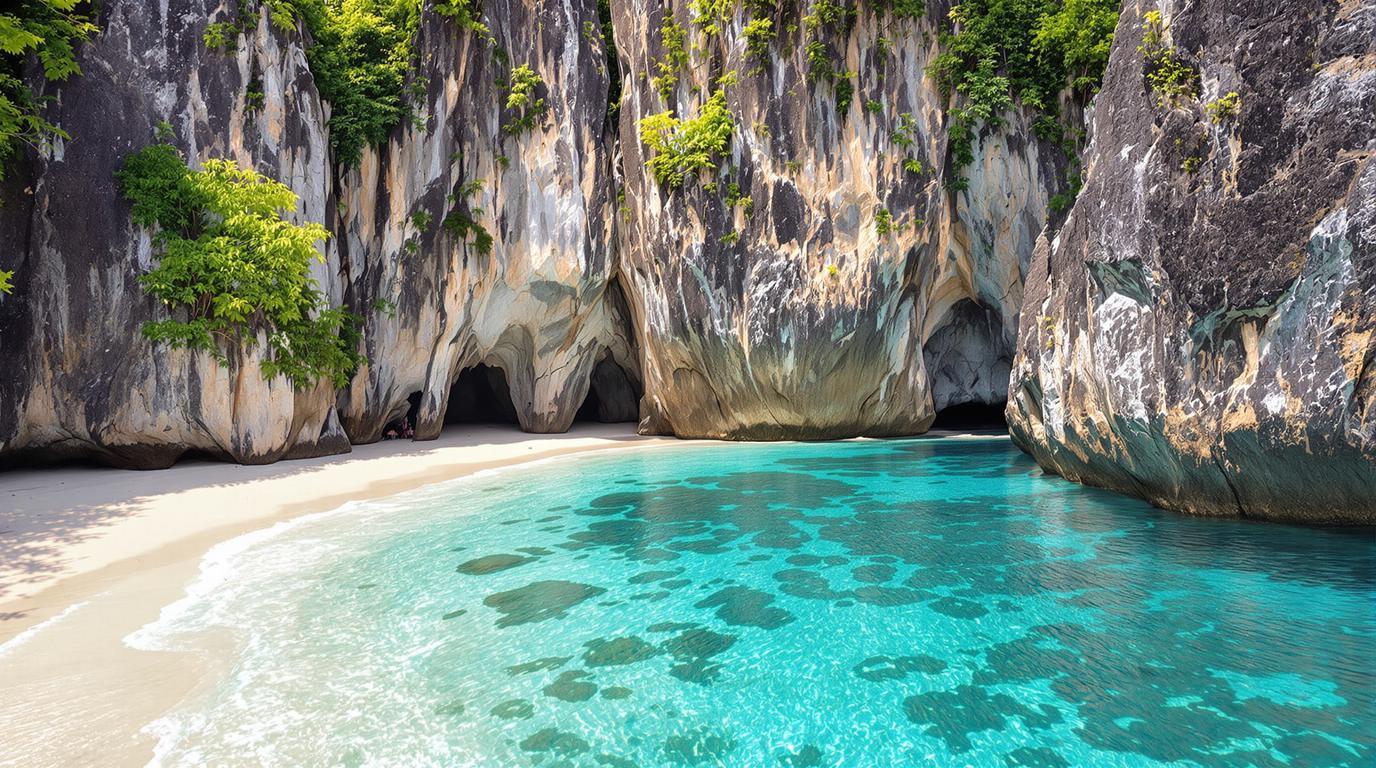The granite formations rising from Thailand’s Andaman Sea create a tropical paradise that costs 70% less than the Maldives while offering the same 85°F waters year-round. After fifteen years photographing hidden coastlines across Southeast Asia, I’ve discovered that Phuket’s 570-square-kilometer island delivers everything travelers seek in the Maldives—pristine beaches, crystal-clear waters, and authentic tropical experiences—without the $6,000-per-night price tags or seaplane transfers.
Most travelers don’t realize that Phuket’s unique geological composition creates a completely different coastal experience than typical limestone tropical destinations. While the Maldives sits on coral atolls, Phuket’s granite hills rise 529 meters above sea level, creating dramatic coastlines and hidden coves that remain crowd-free even during peak season.
The numbers tell the story: where Maldives luxury resorts demand $800-$1,500 per night, Phuket’s equivalent accommodations range from $400-$1,000, with spectacular beachfront properties like Panwaburi Resort starting at just $124 nightly. Your wallet will thank you, and the experience remains equally breathtaking.
The granite secret that transforms tropical island economics
Cost breakdown that changes everything
During my recent July visit to both destinations, the financial reality became crystal clear. A seven-day Maldives vacation averages $5,600-$10,500 for accommodation alone, while Phuket delivers comparable luxury for $2,800-$7,000. Add daily meals at $30-$60 in Phuket versus $100-$150 in the Maldives, and you’re looking at genuine savings of 60-70% without sacrificing quality. Local restaurants serve fresh seafood with authentic Thai flavors that resort dining simply cannot match.
The geological advantage locals understand
Phuket’s granite coastline creates something the Maldives cannot replicate: diverse beach experiences within walking distance. The island’s mountainous interior provides dramatic viewpoints, while granite formations along the western shores form natural swimming pools and snorkeling spots. Unlike the uniform coral atolls of the Maldives, Phuket’s varied topography means every beach offers a different personality, from the bustling energy of Patong to the secluded tranquility of Panwa Beach.
Hidden authenticity that defies mass tourism
The July advantage tourists miss
Here’s what guidebooks won’t tell you: July in Phuket is actually the perfect time to visit. While Western travelers avoid the “rainy season,” local weather patterns provide 8-10 sunny days monthly with brief afternoon showers that cool the air and clear the beaches. Water temperatures hold steady at 29.7°C—warmer than many Caribbean destinations—while tourist crowds thin dramatically. You’ll have world-class beaches virtually to yourself.
Local islands that remain undiscovered
The real secret lies in Phuket’s accessibility to neighboring islands. Day trips to Koh Phi Phi cost $80-$150, delivering the same dramatic limestone scenery as expensive Maldives excursions. Phang Nga Bay’s emerald waters and hidden lagoons provide Instagram-worthy moments without the $500 seaplane transfers. Local longtail boats reach pristine beaches that remain completely tourist-free, offering authentic Thai island experiences at fraction of Maldives prices.
The exclusive experience locals protect
Granite formations create natural exclusivity
During my exploration of Phuket’s eastern coastline, I discovered something remarkable: the granite geology creates natural barriers that protect certain beaches from development. These formations, millions of years old, form hidden coves accessible only by kayak or swimming. Local fishermen have shared these spots for generations, but they remain unknown to most tourists who stick to western beaches.
Cultural authenticity the Maldives cannot offer
Buddhist temples dot Phuket’s hills, night markets showcase regional cuisine, and local festivals continue year-round traditions. The island’s 600,000 residents create vibrant communities where travelers can experience authentic Thai culture alongside beach relaxation. The Maldives, with its resort-focused tourism model, simply cannot provide this depth of cultural immersion.
Travel Note: “The granite boulders at Kata Noi Beach create natural pools during low tide that locals call ‘secret swimming holes.’ I’ve watched sunrise from these formations dozens of times, and tourists rarely discover them despite being steps from popular beaches.” — Local guide Somchai, 15 years experience
Insider access and practical secrets
Transportation advantages that save thousands
Phuket International Airport receives direct flights from major Asian hubs, eliminating the complex transfers required for Maldives resorts. Local transportation costs $20-$100 weekly versus $200-$500 for Maldives transfers alone. Scooter rentals provide island freedom at $5 daily, while resort transfers in the Maldives often exceed $1,000 per couple.
The authenticity factor
Real talk: the Maldives delivers manufactured perfection, while Phuket offers genuine tropical experiences. You’ll swim in the same warm waters, enjoy equally stunning sunsets, and create identical memories—but you’ll interact with local communities, taste authentic cuisine, and explore diverse landscapes that artificial resort environments cannot replicate.
The granite coastlines of Phuket prove that tropical paradise doesn’t require emptying your savings account. With 85°F waters year-round, dramatic landscapes, and authentic cultural experiences at 70% less cost than the Maldives, this Thai island delivers everything discerning travelers seek. Why pay premium prices for isolated luxury when Phuket offers the same natural beauty with genuine cultural depth and significant savings?
